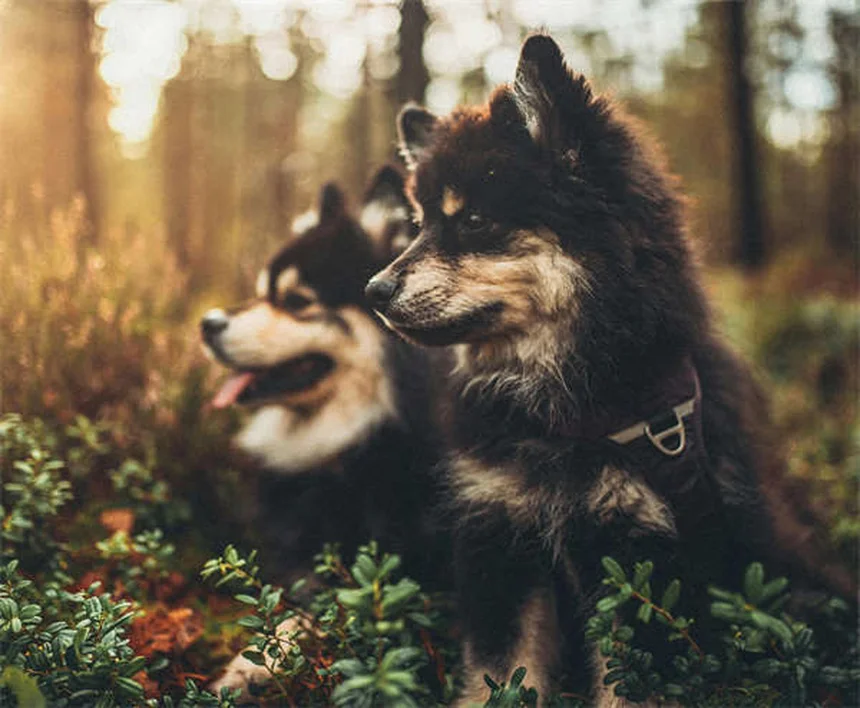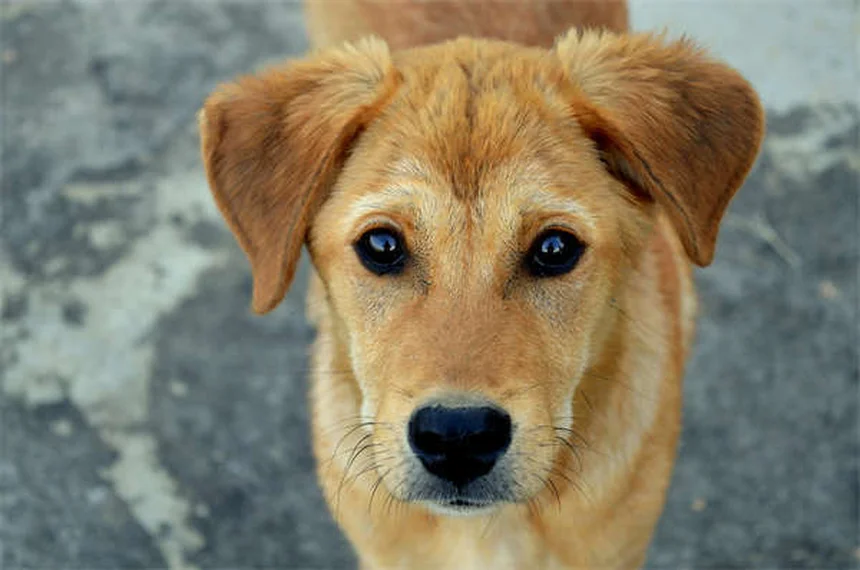Advertisement
How to get rid of fleas on rabbits? The answer is: you need a vet-approved treatment plan and thorough home cleaning! As a rabbit owner myself, I know how stressful flea infestations can be. Your bunny's thick fur makes fleas hard to spot, but those itchy bites are no joke. The good news? With the right approach, you can eliminate fleas safely. First things first - never use dog flea products on rabbits. Their sensitive systems require special care. I recommend Revolution® or Advantage® for cats, but only after consulting your vet about proper dosing. Remember, a 2lb dwarf rabbit needs a tiny fraction of what a 10lb cat would use! We'll cover everything from spotting early signs to creating a flea-free home. By the end, you'll have a clear action plan to protect your fluffy friend.
E.g. :Bringing Home a New Puppy: Essential Tips for First-Time Owners
- 1、Flea Problems? Your Rabbit Needs Help!
- 2、Safe Flea Treatment Options
- 3、Creating a Flea-Free Home
- 4、When to Call the Vet
- 5、Long-Term Flea Defense Strategies
- 6、Your Rabbit's Comfort Comes First
- 7、The Hidden Dangers of Fleas You Might Not Know
- 8、Understanding Flea Life Cycles
- 9、Rabbit-Specific Flea Challenges
- 10、Alternative Flea Control Methods
- 11、Flea Prevention for Multi-Pet Homes
- 12、Psychological Impact of Fleas on Rabbits
- 13、FAQs
Flea Problems? Your Rabbit Needs Help!
Hey there fellow rabbit lover! I see you're dealing with some uninvited guests in your bunny's fur. Don't worry - we'll get those pesky fleas under control together. The key is acting fast before a small problem becomes a full-blown infestation.
Where Do Rabbit Fleas Come From?
You might think keeping your rabbit indoors protects them, but fleas are sneaky little hitchhikers! Here's how they find their way to your bunny:
- Outdoor adventures: Even supervised playtime in the yard can expose rabbits to fleas
- Other pets: Dogs and cats often bring fleas inside (even if they're on preventatives)
- Through open windows (yes, fleas can jump that high!)
- On your clothes after being outside
Did you know a single flea can lay up to 50 eggs per day? That's why prevention is so important!
Spotting Fleas on Fluffy Bunnies
Finding fleas on rabbits is like playing hide-and-seek in a fur coat. Here's what to look for:
| Sign | What It Means |
|---|---|
| Black specks in fur | Flea dirt (their poop!) - turns red when wet |
| Excessive scratching | Your bunny's trying to relieve the itch |
| Hair loss or sores | From constant scratching |
Pro tip: Use a flea comb and white paper towel to check for flea dirt. Add water - if it turns red, you've got fleas!
Safe Flea Treatment Options
 Photos provided by pixabay
Photos provided by pixabay
Why Rabbit Treatments Are Different
Here's something that might surprise you - there are no flea products specifically made for rabbits. Their sensitive systems mean we have to be extra careful.
I learned this the hard way when my bunny Mr. Floppy had a bad reaction to a dog flea treatment. Never use dog products on rabbits - the dosage can be deadly!
Vet-Approved Solutions
After years of rabbit care, here are the treatments I trust:
- Revolution® (selamectin) - my top choice
- Advantage® for cats (imidacloprid) - second option
But here's the catch - you must get the dosage right. A 2lb dwarf rabbit needs a tiny fraction of what a 10lb cat would use. That's why...
Always consult your rabbit-savvy vet before starting any treatment!
Creating a Flea-Free Home
Treating Your Environment
Did you know only 5% of fleas live on your pet? The other 95% are in your home! Here's my battle plan:
- Wash all pet bedding weekly in hot water
- Vacuum daily (yes, even hardwood floors!)
- Use flea traps with sticky pads
- Consider professional pest control for bad infestations
Remember that joke about rabbits multiplying quickly? Well, fleas do it even faster! Breaking their life cycle is crucial.
 Photos provided by pixabay
Photos provided by pixabay
Why Rabbit Treatments Are Different
Here's a cost comparison that might shock you:
| Approach | First Year Cost | Stress Level |
|---|---|---|
| Preventative care | $100-200 | Low |
| Treating infestation | $500+ | Very High |
Investing in prevention saves money and keeps your bunny happier. I treat all my pets monthly - it's worth every penny!
When to Call the Vet
Red Flags You Shouldn't Ignore
While most flea cases are manageable at home, watch for these warning signs:
- Lethargy or loss of appetite
- Pale gums (could indicate anemia)
- Open sores that won't heal
- Any reaction to flea treatments
My golden rule? When in doubt, call your vet. Rabbits hide illness well, so it's better to be safe.
Building a Relationship With Your Rabbit Vet
Finding a good exotic vet changed everything for me. Here's what to look for:
- Special training in rabbit care
- Emergency availability
- Willingness to answer questions
- Clean, rabbit-friendly office
Pro tip: Schedule annual checkups even when your bun seems healthy. It helps your vet spot problems early!
Long-Term Flea Defense Strategies
 Photos provided by pixabay
Photos provided by pixabay
Why Rabbit Treatments Are Different
Many people make the mistake of only treating fleas in summer. Big mistake! Here's my year-round schedule:
- Spring: Begin monthly preventatives
- Summer: Increase environmental cleaning
- Fall: Treat entire household
- Winter: Continue preventatives (fleas love heated homes!)
Consistency is key - I set calendar reminders so I never miss a dose.
Natural Prevention Methods
While I rely on vet-approved meds, these natural helpers provide extra defense:
- Diatomaceous earth (food grade only!)
- Frequent cage cleaning with vinegar solutions
- Grooming sessions with flea comb
- Adding brewer's yeast to diet (consult vet first)
Remember - natural doesn't always mean safe for rabbits. Always research before trying new methods!
Your Rabbit's Comfort Comes First
Soothing Itchy Skin
While treating the fleas, here's how to make your bunny more comfortable:
- Cool compresses on irritated areas
- Oatmeal baths (only if your rabbit tolerates water)
- Extra soft bedding to prevent sores
- Distraction with favorite toys and treats
I keep a "bunny first aid kit" ready at all times - it makes dealing with problems much easier!
Monitoring Recovery Progress
How do you know if your treatment is working? Watch for:
| Week | Expected Improvement |
|---|---|
| 1 | Less scratching |
| 2 | No new flea dirt |
| 4 | Complete resolution |
If you don't see progress, don't wait - call your vet to adjust the treatment plan.
With patience and proper care, your rabbit will be flea-free and happy again. You've got this!
The Hidden Dangers of Fleas You Might Not Know
Beyond the Itch: Health Risks for Bunnies
You probably think fleas are just annoying, right? Well, let me tell you - these tiny pests can cause serious trouble for your fluffy friend. Fleas don't just make your rabbit scratch - they can lead to life-threatening conditions if left untreated.
One danger many rabbit owners overlook is flea anemia. Those little bloodsuckers can literally drain the life from small animals. I once cared for a rescue bunny who needed emergency blood transfusions because of severe flea infestation. The vet told me just 50 fleas can remove 1ml of blood per day - that's like you losing a whole soda can of blood!
The Parasite Chain Reaction
Here's something that might make your skin crawl - fleas often carry tapeworm eggs. When your rabbit grooms itself and accidentally swallows a flea, bam! Now you've got intestinal parasites to deal with too.
Did you know a single flea can harbor multiple parasite species? Check out this nasty lineup:
| Parasite | How It Spreads | Danger Level |
|---|---|---|
| Tapeworms | Ingested fleas | Moderate |
| Myxomatosis | Flea bites | Severe |
| Bartonella | Flea feces | Mild-Moderate |
This is why treating fleas quickly is so crucial - it's not just about comfort, it's about preventing a whole cascade of health issues.
Understanding Flea Life Cycles
The Four Stages of Flea Development
Ever wonder why fleas are so hard to get rid of? It's because most treatments only target adult fleas while ignoring the other life stages. Let me break it down for you:
First comes the egg stage - these tiny white specks fall off your rabbit and into your carpet. Then larvae hatch and hide in dark places, feeding on flea dirt (yuck!). Next they spin cocoons where they can survive for months before emerging as adults. This is why you need to treat both your pet and your home!
Here's a crazy fact - the cocoon stage is practically bulletproof. They can resist:
- Most insecticides
- Extreme temperatures
- Even starvation for up to 6 months!
Breaking the Cycle Effectively
Now here's the million dollar question - how do you actually stop this never-ending flea parade? The secret is simultaneous treatment at multiple points in their life cycle.
I use a three-pronged attack:1. Adulticides (kills adult fleas on bunny)2. Insect growth regulators (stops eggs from developing)3. Thorough environmental cleaning (removes all stages)
Pro tip: Vacuuming alone can remove up to 30% of flea larvae and 60% of eggs - that's free pest control right there!
Rabbit-Specific Flea Challenges
Why Bunnies Are Extra Vulnerable
You might not realize this, but rabbits have some unique traits that make flea control extra tricky. Their sensitive digestive systems mean they can't handle many medications safely. Plus, their grooming habits spread flea dirt everywhere!
Here's something most people don't consider - rabbits can't vomit. So if they ingest flea treatment during grooming, those chemicals stay in their system. This is why spot-on treatments need to be applied very carefully in hard-to-lick places.
The Temperature Factor
Did you know a rabbit's normal body temperature is higher than ours? This actually makes them more attractive to fleas! While humans sit at 98.6°F, bunnies run at 101-103°F - the perfect flea incubator.
This temperature difference explains why:- Fleas prefer rabbits over humans in the same environment- Flea life cycles accelerate on warm rabbit bodies- Your bunny might get infested while you don't notice any bites
It's not fair, but understanding this helps explain why rabbits need special attention when it comes to flea prevention.
Alternative Flea Control Methods
Herbal Options Worth Considering
While I always recommend vet-approved treatments first, some herbal remedies can provide additional support. Rosemary, for example, makes a great natural flea repellent when used in bedding.
But - and this is a big but - many herbs commonly recommended for dogs are dangerous for rabbits. Never use:- Tea tree oil (toxic to bunnies)- Eucalyptus- Pennyroyal- Citrus oils
Safe options include:- Chamomile (soothes skin)- Lavender (mild repellent)- Peppermint (diluted spray for environment only)
The Power of Good Nutrition
Here's a flea-fighting secret many overlook - a healthy rabbit is less appealing to fleas! Proper nutrition strengthens skin and fur, creating natural defenses.
Key dietary components for flea resistance:1. High-quality hay (85% of diet)2. Fresh greens (variety is important)3. Limited pellets (too many cause obesity)4. Clean water always available
I add a pinch of nutritional yeast to my bunnies' food - some studies suggest it makes their skin less tasty to fleas. Plus, they love the cheesy flavor!
Flea Prevention for Multi-Pet Homes
The Domino Effect of Cross-Species Infestations
If you have dogs or cats along with your rabbit, you're playing flea whack-a-mole! Fleas happily jump between species, so you need a coordinated prevention plan.
Here's my multi-pet flea defense strategy:1. Treat all mammals in household (yes, even guinea pigs!)2. Stagger treatments by a few days to monitor reactions3. Use species-specific products (never share meds!)4. Create rabbit-only zones that other pets can't access
Remember - just because Fido isn't scratching doesn't mean he's not carrying fleas to your bunny!
Cleaning Routines That Actually Work
Let's get real - most of us don't have hours each day for flea cleaning. That's why I developed this time-efficient routine:
| Daily | Weekly | Monthly |
|---|---|---|
| Quick vacuum near cages | Wash all pet bedding | Deep clean carpets |
| Flea comb check | Mop hard floors | Rotate/clean furniture |
| Spot clean litter boxes | Check dark corners | Inspect baseboards |
The key is consistency - even 5 minutes daily makes a huge difference in prevention.
Psychological Impact of Fleas on Rabbits
Stress: The Silent Side Effect
We often focus on physical symptoms, but fleas cause mental distress too. Rabbits are prey animals - constant itching makes them feel vulnerable and anxious.
Watch for these behavioral changes:- Reduced playfulness- Aggression when touched- Excessive hiding- Changes in litter habits
I've found that extra bonding time during flea treatment helps reassure nervous bunnies. Gentle petting (where it doesn't irritate skin) releases calming endorphins.
Rebuilding Trust After Infestation
Here's something heartbreaking - some rabbits associate handling with flea discomfort and start avoiding contact. It takes patience to rebuild that trust.
My trust-rebuilding protocol:1. Let bunny approach first2. Offer favorite treats during grooming3. Keep sessions short and positive4. Watch for relaxed body language5. Gradually increase contact time
It might take weeks, but seeing your rabbit flop comfortably in your lap again makes all the effort worthwhile!
E.g. :How to Get Rid of Fleas on Rabbits | PetMD
FAQs
Q: Can I use dog flea medicine on my rabbit?
A: Absolutely not! This is one of the most dangerous mistakes rabbit owners make. Dog flea treatments often contain ingredients that are toxic to rabbits. I've seen bunnies hospitalized after owners used over-the-counter dog products. Rabbits have extremely sensitive systems that process medications differently. Even "natural" dog flea treatments can be harmful.
Instead, talk to your vet about rabbit-safe options like Revolution® (selamectin) or Advantage® for cats. But here's the catch - you still need proper dosing based on your rabbit's exact weight. My 3lb mini Rex gets a completely different dose than my friend's 12lb Flemish Giant!
Q: How often should I treat my rabbit for fleas?
A: For complete protection, I treat my rabbits monthly year-round. Many owners make the mistake of only treating in summer, but fleas thrive in heated homes during winter too. Consistency is key to breaking the flea life cycle. I set calendar reminders so I never miss a dose.
During active infestations, your vet might recommend more frequent treatments initially. The exact schedule depends on your specific situation - factors like other pets in the home, climate, and severity of infestation all matter. My vet helped me create a customized 6-month plan when we first discovered fleas in our multi-pet household.
Q: What's the fastest way to get rid of fleas in my home?
A: Combine thorough cleaning with targeted treatments. Here's my battle-tested routine: First, wash all pet bedding in hot water weekly - the dryer heat kills fleas. Vacuum daily (yes, even hardwood floors!) and immediately dispose of the vacuum bag outside. I also use flea traps with sticky pads in problem areas.
For severe infestations, consider professional pest control. But be cautious - many flea bombs contain chemicals harmful to rabbits. I prefer more natural approaches first. Diatomaceous earth (food grade only!) can help when applied carefully to carpets and corners. The key is persistence - it typically takes 3-4 weeks to completely break the flea life cycle in your home.
Q: How can I tell if my rabbit has fleas?
A: Look for these telltale signs: black specks (flea dirt) that turn red when wet, excessive scratching, or hair loss. Rabbits are masters at hiding fleas - their thick fur provides perfect hiding spots. I use a flea comb and white paper towel to check my bunnies weekly.
Here's a pro tip: Check around the ears and base of the tail first - fleas love these warm areas. Some rabbits groom so efficiently they remove fleas before you can spot them. If you're unsure, schedule a vet visit. My vet uses a special light that makes flea dirt glow, making diagnosis much easier!
Q: Are there natural flea treatments safe for rabbits?
A: Some natural methods can complement vet-approved treatments, but use caution. I've had success with frequent grooming using a flea comb and cleaning cages with vinegar solutions. Some owners add brewer's yeast to their rabbit's diet (always consult your vet first!).
However, many "natural" remedies aren't actually safe. Essential oils, garlic, and onion powders are toxic to rabbits. I learned this the hard way when a well-meaning friend suggested lavender oil - it made my bunny sick! The safest approach is to combine vet-prescribed medication with environmental controls like thorough cleaning and flea traps.


















